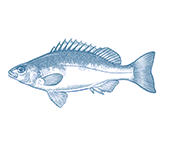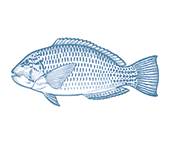




- Better Choice
Wild Caught
Region:
SA
- Blue swimmer crabs are caught in commercial fisheries in QLD, NSW, SA and WA.
- Populations of blue swimmer crabs in SA, which has historically had the largest fishery for the species in Australia, are healthy.
- SA blue swimmer crab populations have recovered as a result of effective management supporting the recovery of populations that were previously in decline.
- Blue swimmer crabs are mainly caught in pots, with minimal habitat impacts and bycatch.





Crabs can be purchased whole (cooked or raw) or as picked and frozen meat. To cook whole crabs, crack any large legs or claws with the back of a knife and then steam, boil or stir-fry. If cooking whole, weigh your crab and cook for 1 minute for every 100g, adding 2 minutes to the total (e.g. 550g + 2 = 7.5 minutes). Alternatively, crabs can be broken into equal sized pieces and dropped into a soup, stew or curry. Crabs are cooked when the shell goes a vivid orange or red colour and the meat pulls away from the shell with ease. Cooked and picked crabmeat can be tossed through a simple pasta or noodle dish, or used for a seafood cocktail, salad or sandwich.
- SA Blue Crab Fishery and Marine Scalefish Fishery (592t in 2020/21)
Blue swimmer crabs are found within near-shore, marine embayments and estuarine systems throughout some tropical, subtropical and temperate Australia and New Caledonia. Blue Crabs occur in a wide range of algal and seagrass habitats, and on sandy and muddy substrata, from the intertidal zone to a depth of at least 50m. Commercial fisheries operate in QLD, NSW, SA and WA.
In SA, which has historically had the largest blue swimmer crab fishery in Australia, annual stock assessments and other information from the fishery indicate that the three main fished populations are healthy, and while some important indicators have declined in recent years, there is also evidence of sufficient juvenile crabs entering the fishery to support future population health.
Blue swimmer crabs are mainly caught using crab pots or traps set over sandy or seagrass habitats. These pots are lowered to the seafloor and rest in place until they are lifted up for harvest, with little impact on habitat.
The equipment used is effective at targeting blue swimmer crabs, resulting in little else being caught, and if caught can be released alive. The South Australian blue swimmer crabs fisheries pose a low risk to endangered wildlife.
Marine parks are in place throughout SA blue swimmer crab fishing grounds, and provide a small but important additional protection for crab populations, other wildlife and support important environmental monitoring.


